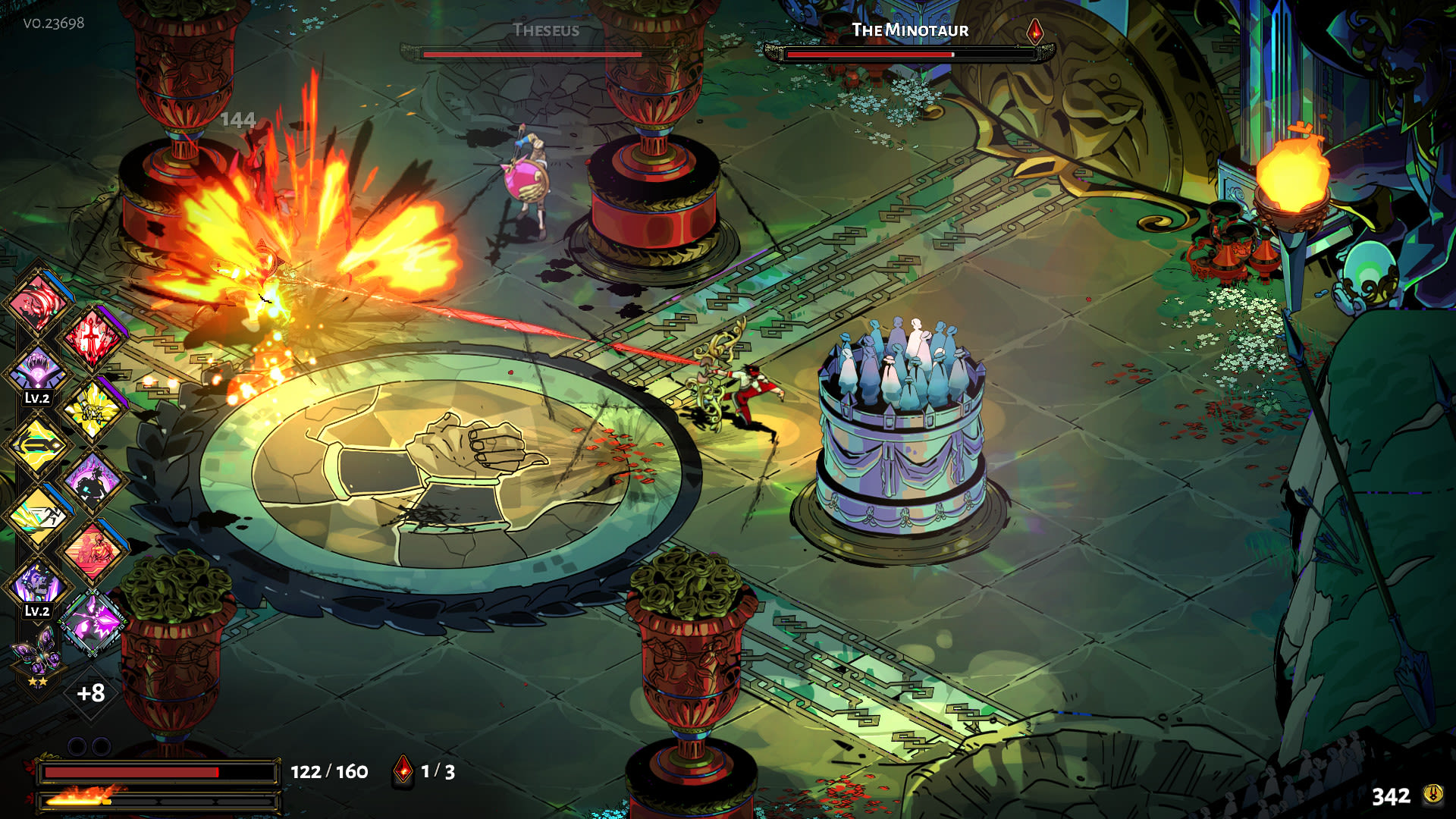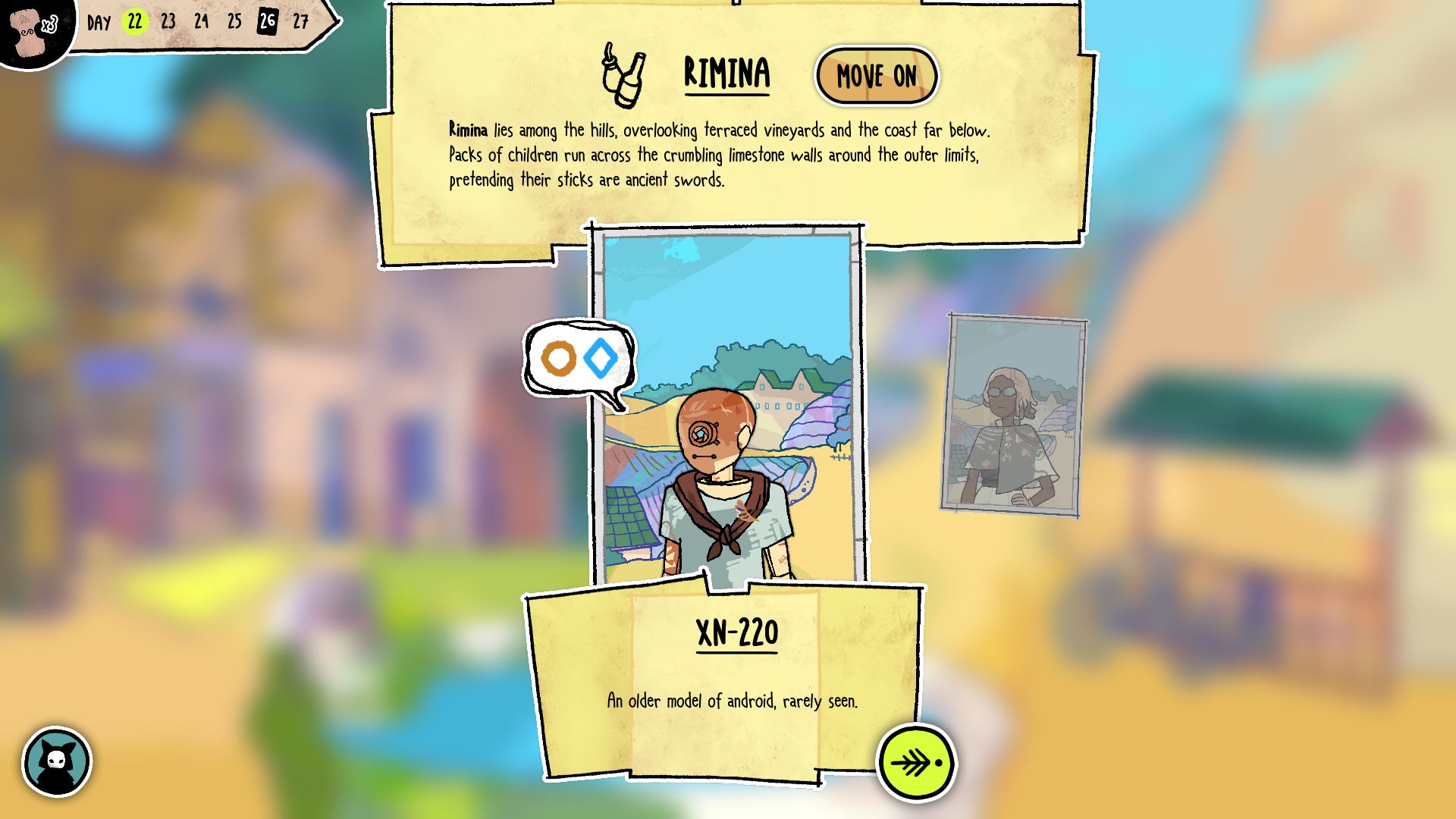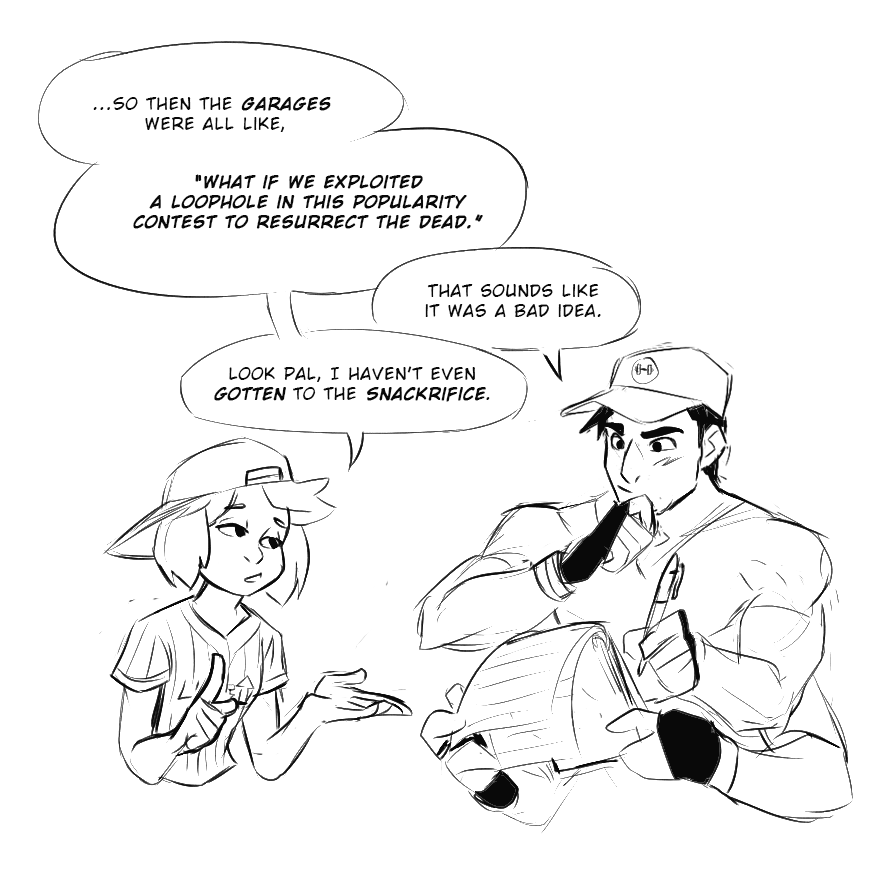This was a very weird year in my life! We spent almost half of it in North Carolina, seeing only Avatar: The Way of Water and The Super Mario Bros. Movie in theaters during that time. Then we moved back to Madison, a city I haven’t lived in since 2016. I immediately fell back in love with the city’s movie scene and reconnected with old friends. That’s meant that I haven’t watched a ton of movies at home, primarily seeing things at free screenings at the university. My fellow UW Cinematheque regulars will recognize many of these films from the Madison Premieres series.
Because I publish these at the Oscars on purpose, I’ll say that this year I liked every nominated film for Best Picture that I’ve seen, even though I’ve left three of those off this list. Maybe they just did a very good job, or maybe I’m getting older. Past Lives is a brilliantly acted debut that is shaggy in a few places. Maestro is a weird-as-hell movie I might grow to love over the years, but I wish the marriage drama worked a little better for me. And Poor Things may be more style than substance, but I had a hoot watching Stone and Ruffalo especially in such good goofmaster spirits.
Each of these write-ups includes a reference to any streaming service members can watch the film on for free. With one exception, all of these films are available either on streaming services or VOD rental.
HONORABLE MENTION: The Pope’s Exorcist
Dir. Julius Avery
Netflix
The Pope’s Exorcist is not my #24 film of the year. I’m not sure The Pope’s Exorcist is my #30 film of the year. But I want to watch Russell Crowe play Father Gabriel Amorth in like six more of these perfectly paced perfect little movies for morons. He rides up on that little Vespa, sits and drinks whiskey while speaking in Italian, and the whole thing is going delightfully if a little calmly. Then the last half hour hits and we get a perfect Madcap Special Effects Extravaganza. The Pope’s Exorcist hits the lizard brain in a way even Branagh’s Poirot couldn’t quite manage this year.
A big “see you later” to Ferrari, Magic Mike’s Last Dance, Showing Up, American Fiction, The Holdovers, All Of Us Strangers, Aquaman and the Lost Kingdom, Beau is Afraid, Broker, Dungeons & Dragons: Honor Among Thieves, Eileen, Furies, Godzilla Minus One, In Water, John Wick Chapter 4, M3gan, Master Gardener, Napoleon, No Bears, Pacifiction, Passages, Perfect Days, Saturn Bowling, Shin Kamen Rider, The Crime Is Mine, The First Slam Dunk, The History of the Minnessota Vikings, and The Killer.
23. The Sweet East
Dir. Sean Price Williams
VOD
I saw The Sweet East much earlier than it’s ended up available to everyone else, so I know some people would probably call it my “first movie of 2024.” This is the most Chapo Trap House-brained movie I’ve seen in a long time, a picaresque fantasia of fringe politics and embarrassing yuppies. The first ten minutes make a pretty awful first impression with Talia Ryder’s Lillian being caught in a PizzaGate riff, but once that’s past, it’s pretty damned funny for the rest of its runtime. Simon Rex, Ayo Edibiri, and Jacob Elordi are probably the highlights of the extended supporting cast. The film, directed by Safdie Brothers and Alex Ross Perry cinematographer Sean Price Williams, looks fantastic and nails a lot of great visual gags throughout.
22. Priscilla
Dir. Sofia Coppola
Max
Sofia Coppola returns to the caged bird structure of The Virgin Suicides, Marie Antoinette, The Beguiled, and, arguably, Lost in Translation. Cailee Spaeny as the titular Priscilla is asked to play a tough role, given she needs to be both our POV character and one who we understand has basically sacrificed all internal identity for years at a time. It’s not an especially kind film to Priscilla Presley given where it chooses to cut to black, but it’s an incredibly well-observed story about that sort of self-annihilation.
21. You Hurt My Feelings
Dir. Nicole Holofcener
Showtime
A writer (Julia Louis-Dreyfus) overhears her husband (Tobias Menzies) telling her brother-in-law (Arian Moayed) that he hates her new novel. You Hurt My Feelings is marriage dramedy about imposter syndrome and “little white lies” and is my first Holofcener film. She’s the director of films like Enough Said and Walking and Talking, and it pretty well lived up to my understanding of her work. This film was a challenge to get through for me, the social discomfort being a sore anxiety spot for me. But I’m glad I pushed through! The back half is full of confrontations and reconciliations that shared something valuable about communication, cutting things off, and making value judgments. Dreyfus is very obviously suited to the material, which feels like a more dramatic approach to her classic TV work.
20. Rotting in the Sun
Dir. Sebastian Silva
MUBI
I said “I’m definitely going to see Big Gay Beach Movie” the moment I saw this trailer. The trailer maybe was not representative of how much of Rotting in the Sun was at the Big Gay Beach, but good lord, did it not hold back on the Big Gay while it was at that beach! Instead, this film spends most of its time as a very funny meta-thriller about class dynamics and social media toxicity, with both Sebastian Silva and co-star Jordan Firstman playing versions of themselves that are not very kind portraits. It’s very funny, the thriller portion of the film is quite tense, and Catalina Saavedra still haunts me as Silva’s assistant and maid Vero.
19. The Adults
Dir. Dustin Guy Defa
VOD
Cringe comedy’s tough in film! I think of the apocalyptic cringe of something like Rick Alverson/Gregg Turkington’s Entertainment, where all you want to do is stop looking at the screen. The Adults is packing cringe comedy into drama, which forces the cringe behavior of this theater-kid sibling dynamic into diegesis. It ends up with some really funny moments as its core trio of siblings break into embarrassing inside jokes in front of other people, and then carry that awkwardness into their independent lives as well. This serves as a really special performance showcase, especially for Hannah Gross and Sophia Lillis, and even if the big heart didn’t quite land with me as hard as it did for some people I saw it with, I still really enjoyed it greatly.
18. The Settlers
Dir. Felipe Galvez Haberle
VOD
Haberle’s impressive debut western situates colonial violence against drunk black comedy. The Spanish and English worlds descend upon Patagonia in the form of a Queen’s soldier, a Texan cowboy, and the half-Chilean sharpshooter. Their job is to find safe passage from their Spaniard boss’s plantation to the Atlantic shore, and rack up a genocidal body count along the way. The first half of The Settlers manages an incredible mounting tension all building toward a pretty horrific sequence of violence, and then pulls back to a more intellectual cultural critique of these bloodthirsty profiteers. This is done in gorgeous landscape photography and with a rousing adventure film score by Harry Allouche, which sets the stage immediately for a film that starts rollicking and ends in despair.
17. Skinamarink
Dir. Kyle Edward Ball
Hulu, Shudder
Maybe oversold as “the scariest movie in years” for a lot of people, Skinamarink is now iconic as a verb or situation for “being trapped in a house you can’t leave with something you can’t see.” That’s crazy given just how abstract and experimental Skinamarink is as a film. Most of the dialogue is murmured by children who are often off-camera – some of it is subtitled but not all of it. There’s no real plot so much as an encroaching sense of dread and wrongness, an aesthetic darkness captured beautifully on such a low budget. Something cruel is happening and its evil only grows stronger as the film goes on. I certainly can’t recommend Skinamarink to everyone, but it’s such a singular, inventive film that it’ll likely be the go-to reference point for future Skinamarinks to come.
16. Spider-Man: Across the Spider-Verse
Dir. Joaquim Dos Santos, Kemp Powers, Justin K. Thompson
Netflix
Visual imagination trumps everything else in this sequel to the still-overwhelmingly-great Into the Spider-Verse. Across the Spider-Verse never quite reaches its heights narratively, but pound for pound this is still full of many of the craziest animated images I’ve ever seen on screen. Steinfeld’s Gwen Stacy and Luna Lauren Velez’s Rio Morales also pack emotional wallops into expanded roles from the previous movie. There’s some shorthand I don’t like here, I think the “canon event” narrative device that became the movie’s central meme is outright kind of bad, and until the sequel I can’t say whether or not the Miles storyline is headed anywhere good, but I have confidence I’ll love looking at it most of the way through.
15. Bottoms
Dir. Emma Seligman
Amazon Prime
Goshdarn riot. The premise of Bottoms maybe sells “Gay Girl Fight Club” as a little more radical a concept than Seligman and Sennott were going for with the script. They’re really just making a broad comedy, closer to Hot Rod or Superbad, and maybe some people were disappointed by that. I thought everyone in this movie was really funny, from Ruby Cruz to Marshawn Lynch, and Rachel Sennott and Ayo Edibiri are so good together. I like that Sennott’s PJ is just, like, an awful friend, a shitty teenager that never really gets redeemed. The Avril needledrop is one of the best jokes I saw all year.
14. Anatomy of a Fall
Dir. Justine Triet
VOD, Hulu March 22
Stretching the definition of courtroom drama by allowing so much mistrial to occur that it almost begs to be a film set outside Earth, Anatomy of a Fall marketing itself on the phrase “Did She Do It?” is an extension of its commentary on the violence of a justice system. We watch Antoine Reinartz as prosecutor lambast Sandra Voyter’s (Sandra Huller) character and enter everything from art to sexuality into public record as evidence Sandra killed her husband. She, along with her attorney Vincent (Swann Arlaud, the hottest exhausted guy in a movie in 2023) interrupt regularly to attack the absurdity of a legal argument that ends up offering very little in the way of evidence.
This ends up forcing the film to be less of an actual legal procedural than a moral and ethical wrestling match, a determination within the self to decide whether legal theater can ever meaningfully determine guilt in any edge case, an understanding of the damage inherently done under these circumstances. The gravity of that damage primarily falls on Milo Machado-Gradner’s Daniel, the blind son who cannot look away from the dissolution of his world, a brilliant performance from an actor I hope we continue to see.
13. Knock at the Cabin
Dir. M. Night Shyamalan
Amazon Prime
The Twilight Zone, alongside this film, are at their best when they beg the question, “What if the things you 100% knew to be true were wrong?” Some people have found Knock at the Cabin’s apocalyptic stakes to be deflating the film’s tension, determining “well, the film only works if the apocalypse is coming and these stakes are too crazy, so where’s the tension?” I think that understands the film’s POV a little incorrectly. Instead, I think the tension comes from “how can the horsemen possibly convince anyone they’re right?” Bautista’s performance anchors that tension brilliantly, realizing so early on just how high the odds are stacked against them.
The history of a lot of the horror genre stems from the perspective of punishment – those who sin are persecuted by Great Evil, in karmic retribution. Beyond religious morality plays, that history extends into classic pulp horror comics and the 70s and 80s slashers. I think Knock at the Cabin very smartly understands how to reverse engineer that history into interrogating why those who already are most marginalized or persecuted bear the weight of that Great Evil’s wrath.
12. The Zone of Interest
Dir. Jonathan Glazer
VOD
Details are the substance with The Zone of Interest, a near-plotless film about the evil inherent to domestic class fantasy and the genocidal background noise of self-annihilation. The film sets itself against the silhouette of Auschwitz, and I think the big picture is the banality and decay. Not just “the banality of evil,” but also the banality of their imagined Good Life. These fascists living high on the hog are boring – they do boring things, they keep a boring garden, they have boring conversations. Their kids are shitty and mean – in real life, they grew up to be even shittier. They’re poisoning their imagined Garden of Eden, from the air filled with the fumes of death to the river filled with ashes and bones, from the flowers bleeding to their own bodies rebelling against them. Maintaining the fantasy of domesticity while slaughter sits in the background destroys us.
The absolutely horrifying score, by Under the Skin and Jackie composer Mica Levi, is the film’s greatest achievement – the end credits theme is one of the most horrifying pieces of music I’ve heard in my entire life.
11. Barbie
Dir. Greta Gerwig
Max
I’ve been team Gerwig since Lady Bird in 2017, so I had pretty high faith that Barbie would deliver, but I never predicted what exactly she’d do with The Barbies and The Kens. A movie this heavily seen is inherently going to be both underrated and overrated, and I’m probably doing both at once. I think Robbie and Gosling are so funny and so strongly in character in this film – it would deservingly be listed alongside either’s best performances. The “What Was I Made For?” Montage made me cry. The “Push” cover made me laugh so hard. I think Kingsley Ben-Adir was so phenomenal as Gosling’s Benvolio Ken, an underrated supporting turn in a movie full of strong ones. This movie’s a treat, one I’d happily toss on right now.
10. May December
Dir. Todd Haynes
Netflix
It’s crazy a movie about such an uncomfortable subject manages to be so much fun as May December. A poison pill unsurprisingly too weird for the actors’ branch at the Oscars, May December is either a very dark comedy or a funny drama, depending on which part you emphasize, “loosely” based on the Mary Kay Letournau case. The story of Charles Melton’s Joe Yoo is a devastating arc about someone reckoning with his exploitation and infantilization by his wife (Julianne Moore,) along with the intense repression of his feelings of inadequacy and inability to maintain healthy relationship boundaries. The story of Natalie Portman’s Elizabeth Berry is a pitch black satire about how artists dredge up other people’s pain to make spurious dramas that probably shouldn’t exist. Samy Burch’s screenplay and Haynes’s direction of performance both balance the trauma and the absurdity of the proceedings, and the film left me both uncomfortable and fully satisfied. The ending scene puts a perfect pin on a film that’s already won me over.
9. The Wonderful Story of Henry Sugar (and Three More)
Dir. Wes Anderson
Netflix
At one point, I had all four of the Wes Anderson short films on this list because I really do think they all excel at different things. Poison, starring Dev Patel, is probably the funniest, with the performances from Benedict Cumberbatch and Ben Kingsley really matching phenomenal narration from Patel. The Swan has my favorite performance of the batch in Rupert Friend’s narrator, quietly furious, maintaining an emotional outrage that is devastating to watch. But it’s The Wonderful Story of Henry Sugar, which hands off between Cumberbatch, Patel, and Kingsley, that has to be my personal favorite – all three deliver unbelievable material, of course, but it’s the short’s visual imagination that makes it my favorite. This isn’t Anderson’s first film that fully breaks the fourth wall to depict special effects or character arcs – The French Dispatch handing off from Tony Revolori to Benicio del Toro is still probably my favorite – but this is the most he’s ever embraced that style, and I think it works beautifully.
8. Dad & Step-Dad
Dir. Tynan DeLong
VOD, NoBudge
Without any contest, Dad & Step-Dad is the funniest movie I saw all year. Colin Burgess (as Jim, the Dad) and Anthony Oberbeck (as Dave, the Step-Dad) deliver every line as such a fucking meal. The primary comedy comes from watching two dorks try to out-alpha one another, first passive-aggressively and later much more aggressively. But then there’s their thirteen year old son, Branson (Brian Fiddyment, decidedly not thirteen years old) who goes on his own hilarious journey. I’ve been saying lines from this movie every day since I saw it basically just to make myself laugh. If you enjoy the trailer, it delivers on that register for basically the entire running time. I’m gonna be shouting about this movie forever.
7. Afire
Dir. Christian Petzold
VOD
“What if a guy sucked?” That’s the central comedic question of Afire, which sets stuffy crumbum author Leon (Thomas Schubert, hysterical) to a Baltic beach resort where everyone else is having a good time. He’s sharing his holiday home with a photography student named Felix (Langston Uibel) and they’re meant to finish their major projects while enjoying the water. When they find out they’re double-booked with free spirit Nadja (Paula Beer,) Leon becomes inconsolable, rude, and simultaneously completely worthless as a writer. I grew to love these characters and the people they brought into the house for their strong senses of humor. When the stakes rise in the third act, it culminates in a really poignant character drama, but before that it’s perfectly set clashing personalities against one another to keep things awkward, funny, and always laughing at the right guy.
6. The Boy and the Heron
Dir. Hayao Miyazaki
Theaters (this is the only film listed not on home video yet)
I so excitedly bought the 2021 Bruno Navasky translation of Genzaburo Yoshino’s How Do You Live?, a wonderful book about a young Japanese boy named Copper with a vivid imagination who learns with his uncle and his friends at school about his place in the world. It’s a wonderful story, filled with humor, funny facts, and philosophical lessons aimed at teaching children how to be kind, relate to a world from which they’re sheltered, and take perspective. I bought it because it was the book Miyazaki was basing his next film on – after seeing The Boy and the Heron, I hope he considers going back and adapting it some day after all!
Explaining the plot of the film is to spoil it – broadly, there’s a grieving boy who loses his mother, and he encounters a fantastical mystery that leads to a world of discovery. There is certainly some thematic overlap between this and How Do You Live?, but The Boy and the Heron is the open wound of a person who feels that the world we’ve created is a self-defeating one that may need to be torn down before something can be built in its place. Its bold formal decisions challenge the style and narrative coherence of Miyazaki’s previous work, and it’s almost impossible to say with simplicity “what it was about.” I know that I still found it profound, exciting, beautiful, funny. One of the best things a film can be is a puzzle – not a film you watch and fully understand the first time, but one you try to piece together over many years. I look forward to rewatching The Boy and the Heron, hearing the astonishing Joe Hisaishi score, and discovering this film again and again.
5. Killers of the Flower Moon
Dir. Martin Scorsese
Apple TV
Of all the films on this list, this is the one I’m worried I’m still underrating. Killers of the Flower Moon offers up its own weaknesses – the much-discussed ending (which I adore) is an admission of culpability by Martin Scorsese. He and Eric Roth have taken David Grann’s book and done what they can to center the Kyle and Burkhart families but in the end, this film is hoping to start conversation, not to be the definitive text. I’ll say that if anyone’s earned the benefit of the doubt on that idea, it’s Martin Scorsese, whose work as a producer and whose World Cinema Project at the Film Foundation have meaningfully brought to life and preserved films from marginalized voices.
Setting aside the “shoulds” of this film, Killers is so powerful because it honors Mollie and Ernest as characters. It never forgives Ernest Burkhart his vile crimes, easily the least likable man I’ve ever seen Leonardo DiCaprio play, but it also understands that he believed himself capable of compartmentalizing “love” and money until one devours the other. The attention for the film has largely come down to Lily Gladstone’s performance, which is one of the best anyone has given. I actually think it’s become a bit overstated how much of her performance is dedicated to reacting and being soulful – her Mollie is so funny, so wonderful at leading Ernest through their courtship or gossiping with her sisters, so great at speaking her mind but then not belaboring the fight. Like Barbie and Oppenheimer, it also has an incredibly wide cast of supporting players – I’ll shout out Tantoo Cardinal as Mollie’s mother, who I think invests a lot of joy what could be an afterthought character.
4. Monster
Dir. Hirokazu Kore-eda
VOD
Monster’s advertising has largely highlighted the importance of different perspectives in understanding how a story is really to be understood, but the story it actually tells is more of understanding how the limits of our own perspective keep us from understanding the behavior we observe. The film tells the story of about one month of time – a fire burns down a hostess club, Sakura Ando as Saori uncovers that her son is depressed and believes it’s due to persecution at school, and then a rain storm builds to a climactic conclusion. We see this month or so three times, from different characters’ points of view. Only by seeing all three stories can we understand what’s really happened.
The worldview this film paints is a sinister one – we see decent people try to live decently only for them to be surrounded by people who come across as cruel, uncaring, possessed by a system of beliefs that cannot allow humanity through. Annie described that from the title and the extent of darkness on display, she anticipated a malevolent horror to unveil itself. Without spoiling anything, I’ll say this film remains firmly a drama, not a horror film, and any Monsters we see are terrestrial in nature, even as some of the film’s best characters dream of something bigger.
Hirokazu Kore-eda is growing to be considered one of our modern masters, with now five or six films I’d consider to be instant classics of Japanese cinema. Shoplifters, Kore-eda’s 2018 film, remains a shining beacon I look back upon with awe. There are sequences in that film that manage such an ingenious marriage of tone, performance, aesthetic, and philosophy that I maintain it’s one of the greatest examples of what a director can achieve. Monster speaks to me much more deeply than Shoplifters, and while it’s not as astonishing a feat of filmmaking, the depth to which it grabbed me from beginning to end was immense and powerful.
3. One Fine Morning
Dir. Mia Hansen-Love
Amazon Prime
At least since COVID quarantine began, I’ve been struggling a bit with focus and memory. My long-term recall, to childhood, has never been especially strong, but I have to make more of a conscious effort to write reminders to myself or I’ll forget what I’d planned to do these days. That feeling certainly lends itself to a sense of dread watching Lea Seydoux’s Sandra relate to her father, Pascal Gregory’s Georg, as he succumbs to the advanced stages of a neurodegenerative disorder called Benson’s Syndrome. The subject matter is something One Fine Morning approaches without the melodrama of imminent peril – Georg’s sorrow comes in the form of his loss of independence and clarity of thought, not because he’s harming or endangering himself.
This film also combats this sense of loss with new opportunities – the other primary story is Sandra kindling a romance with a married friend and trying to manage her daughter’s expectations about where that might be leading. The romance itself is not the most passionate, but that texture carries in Seydoux’s performance from scene to scene, and it ends up giving her one of her best characters I’ve seen. She’s funny, exhausted, literary, philosophical, bereft, sexy, angry – if I was going to recommend one film to understand why some consider her one of the best actors in the world, it would be this one. The sensitivity of Hansen-Love’s direction and screenplay combine to make a film that approaches aging and degeneration with the grace and levity to make its often sunny cinematography and romantic diversions feel less like a spoonful of sugar to help the medicine and more like the natural course of life during transition.
2. Asteroid City
Dir. Wes Anderson
Amazon Prime
Asteroid City is a joyful parade of pleasures. Without spoiling it, Wes Anderson sets a grieving family into the small Southwest American road stop of Asteroid City to participate in a youth science competition – when Science Happens, they’re asked to quarantine with a hyperqualified Wes Anderson ensemble while the United States government puts its pants back on. There’s at least two or three layers of frame narrative put on top of this story, all of which I found delightful, but suffice it to say the world of Asteroid City is a play and we see its actors and creatives trying to figure out what it all means right alongside their characters.
This film is as gorgeous as anything Wes has ever produced, the red rock and sands creating a perfect backdrop for delightful costuming and set design. It’s so darn funny, from Jeffrey Wright’s General Gibson giving a hysterical autobiography on stage to Tilda Swinton’s Dr. Hickenlooper realizing the kid scientists outclass her, run laps around her and her team. There’s singing cowboys, deadpan Scarlett Johannsen, a scenery chewing Tom Hanks. It’s got the sort of emotional poignancy many of Wes’s films have, maybe closer to Moonrise Kingdom than the open wound of The Life Aquatic.
Right near the end, the film takes a turn into a back alley I hadn’t anticipated, and Margot Robbie makes a two minute appearance that is the best individual scene of acting anyone had all year. It’s a scene that’s funny but also one I can’t watch without crying. It recontextualizes everything the film has been about up til that point, all its metanarrative of “why do we tell stories and why do we tell them this way” and its satire and its comedy and reframes everything we’ve seen as the story of learning to remember why and how we live at all. I’m a sucker for Wes Anderson, and this is up there with any of his best.
1. Oppenheimer
Dir. Christopher Nolan
Peacock
Many of us who love Oppenheimer have spent a substantial amount of time discussing the film figuring out which of its many scientists and soldiers are at the top of your squad. From David Krumholtz’s citrus-slinging Isador Rabi to Tom Conti’s unflappable Albert Einstein, Jack Quaid’s bongo-bearing Richard Feynman to the Christmas gift of Kenneth Branagh’s Niels Bohr. Hartnett, Damon, Safdie, Clarke, DeHaan, Urbaniak, Thirlby, Modine, Peck, Ehrenreich, Blair – the Best Supporting Performance category at any given awards body could belong solely to performers from the film Oppenheimer, each bringing different energies to this massive ensemble project, different character philosophies. The fabric of the film is woven with guarded loving kindness, petty resentments, fatalist violence.
When it finally came down to a tournament of “Oppenheimer Guys” on Twitter, none could best Oppie himself. Murphy will likely take home his Oscar on Sunday – I’ve come to believe this is a generational performance since seeing it, the sort of incredible character work only comparable to Peter O’Toole in Lawrence of Arabia. There is something to simply bearing the weight of this epic ensemble project, but it’s also a matter of maintaining both an emotional arc and psychological arc that tracks across the film’s diverging timelines. I relate to Oppenheimer’s frozen moments and autopilot martyrdom just as easily as I do his confusion at how other people experience his concept of fidelity.
I read this wonderful piece by Neil Bahadur as I was composing this and I was very struck by his argument for the film’s structural innovation. His words called to mind Cloud Atlas, which uses this sort of technique to draw parallels between different people across different plot lines and invoke a cosmic, psychic link between different storylines. Oppenheimer manages to use that emotional rhythm without ever summoning the question, “well, he didn’t know that yet, why did he do that?”
I haven’t rewatched the film – I don’t know that I’ll ever rewatch it at home, reserving it for the biggest screens imaginable. I remember my Barbenheimer day viewing. I remember the terror I felt in the theater. There is something I find deeply, elementally frightening about nuclear annihilation. I found it impossibly harrowing, but what I’ve taken home with me is the film’s many depictions of people, of love, of petty harm. It’s a painful film in many ways, but also one that makes the argument for why the pain is worth the fight.



















































